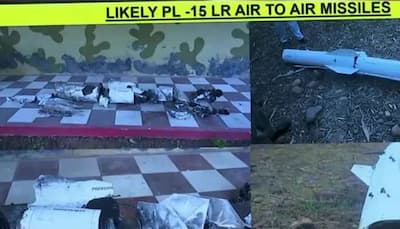New Delhi: In the fog of the brief but intense May 6-7 India-Pakistan air stand-off, a single smoking clue has emerged – one that is now causing serious heartburn in Beijing. Fragments of a Chinese-made PL-15E beyond-visual-range air-to-air missile, launched by Pakistan’s Air Force during the clash, were recovered by Indian authorities near Kamahi Devi village in Punjab’s Hoshiarpur.
This was not only any wreckage. The debris was largely intact, including its dual-pulse motor, datalink, inertial navigation system and the crown jewel (AESA radar seeker). India is now in possession of the brain and engine of China’s most advanced air-to-air missile.
And that is a nightmare scenario for Beijing.
India’s Operation Sindoor saw dozens of Rafales, Sukhoi-30MKIs and Mirages take the skies loaded with Meteor missiles, SCALP cruise weapons and Hammer bombs.
Pakistan retaliated with Chinese-supplied J-10Cs and JF-17s, armed with the PL-15E – a radar-guided missile with a range upwards of 200 km. It was one of these missiles – fired in anger at Indian aircraft – that ended up in Indian territory, almost fully intact.
Suddenly, China’s hush-hush missile technology is in the labs of India’s DRDO. Global powers are watching closely.
According to defence sources, the Five Eyes alliance (the United States, the United Kingdom, Australia, Canada and New Zealand) along with Japan and South Korea have all informally requested access to the missile’s remains.
Their target? The AESA seeker and dual-pulse propulsion tech – hallmarks of China’s push to outpace Western missile systems.
The incident, though underplayed in Chinese state media, is causing major alarm within the PLA’s defence ecosystem. Developed by AVIC and showcased as China’s answer to the American AIM-120D and European Meteor, the PL-15E has now been exposed in real combat and worse compromised.
For Indian defence scientists, it is a rare windfall. With critical components in hand, India’s missile development programmes like the Astra Mk II could get a serious boost, especially in radar jamming resistance, seeker tech and extended range propulsion.
Not just that – Indian engineers could now cross-check the effectiveness of China’s vaunted missile under real conditions and possibly expose weaknesses that even the PLA may not want to admit.
China’s defence ministry has been measured in its words. Spokesperson Zhang Xiaogang avoided direct comment on the missile’s failure or capture. Instead, he called for calm, saying, “India and Pakistan are neighbours who cannot be moved… China is willing to play a constructive role.”
But he did, notably, confirm that the PL-15E was used – marking its first operational deployment.
According to SIPRI, a staggering 81% of Pakistan’s arms imports now come from China, up from 74% a few years ago. This includes more than half its fighter jets (JF-17s, J-10Cs), missile systems like the PL-15E, air defence systems and satellite capabilities.
Reports even indicate that China rushed new PL-15E missiles to Pakistan at the peak of the May conflict – part of Beijing’s support to its “iron brother”.
The missile debris is a trophy as well as a strategic liability for China, a tech boon for India and a milestone in South Asia’s arms race.
It also marks a shift – wars now may not need territorial invasion. They can be fought remotely through missiles, drones, radars and secrets buried in missile wreckage.
China’s weapon has spoken but not in the way Beijing hoped.
Stay informed on all the , real-time updates, and follow all the important headlines in and on Zee News.








